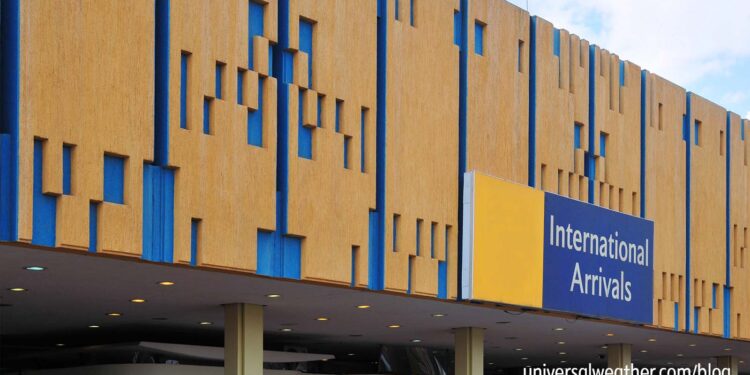Business Aircraft Ops to Nairobi, Kenya – Part 1: Airports and Services

This is a post by authors Victoria Swai and Hussein Maulid Qubah. Victoria and Hussein work for for Kilimanjaro Aviation Logistics Centre (KALC), a subsidiary of Universal Weather and Aviation, Inc. which is headquartered in Mwanza, Tanzania. Victoria and Hussein are experts on permits for the African region and can be contacted at victoriaswai@universalaviation.aero or husseinmaulidqubah@univ-wea.com.
This business aviation blog post is part one in a series on operations to Nairobi, Kenya.
Nairobi is the capital and largest city in the Republic of Kenya. A cosmopolitan and multi-cultural city, Nairobi is one of the major financial centers in Africa and, on the tourism front, is known as the “Safari capital of the world.” If you’re operating your business aircraft to Nairobi (HKJK)–the preferred airport of entry (AOE) for business aviation—there are several operational, permit and documentation issues to be aware of.
The following is an overview of what you need to know:
1. Airports and alternates
Kenya has six AOE in addition to HKJK — Kisumu (HKKI), Lokichoggio (HKLK), Nairobi Wilson (HKNW), Eldoret (HKEL), Malindi (HKML) and Mombasa (HKMO). The preferred alternate for HKJK is HKEL, and this airport is 134 nautical miles (NM) from HKJK. You may also want to consider close-by HKNW although runway length here is just 5052 feet (ft). While 228 NM from HKJK, HKMO, the second busiest airport in Kenya, is another good 24-hour airport of entry (AOE).
2. Peak traffic periods
HKJK is a busy airfield with lots of scheduled commercial traffic throughout the day. Peak periods of commercial flight activity are early in the morning and later in the afternoon. June – August, typically, is the busiest period for HKJK. Parking priority is always given to scheduled commercial operations; however, general aviation (GA) parking is seldom an issue.
3. Runway closures
The runway at HKJK is currently closed to all operations from 0000-0600 local until April 2016. This closure is for maintenance purposes, and HKJK will return to normal 24/7 operating hours next year. During these closure periods a good 24 hour airport of entry (AOE) alternate is HKEL.
4. Ground support equipment
HKJK, as a major AOE, has a good supply of ground support equipment (GSE) available for GA operators. However, it’s recommended that operators bring a tow bar. Some parking stands at HKJK require a tow in/out and if you’re traveling onward to other airports in Kenya the selection of GSE may be minimal. Also, all services via the ground handler can be arranged via credit with prior arrangement.
5. In-flight catering considerations
In-flight catering is available at HKJK, and operators may use this option or source it through local area hotels. All catering requirements should be coordinated with your ground handler. While a wide range of catering options can be arranged 24 hours/day at this location, it’s always best to provide your handler with 48-72 hours advance notification, especially if you are requesting items that may not be readily accessible.
6. Flight restrictions and cabotage
While there are currently no cabotage restrictions in Kenya, operators must always provide their full schedule along and passenger lists for every stop in the country. For any flight to/from Somalia, the operator must obtain prior written permission from the Minister of Transport and Communication, who will want to know the purpose of your flight.
7. Government and diplomatic flights
For government, diplomatic, or military flights to Kenya, additional permission is required from the Ministry of Foreign Affairs and International Cooperation. Your ground handler can assist with this application or you may do this via diplomatic channels.
8. Additional Reading: Nairobi, Kenya operations – Series Index
Note: Links will be updated as articles are published.
- Part 1 – airports and services
- Part 2 – permits and slots
- Part 3 – customs, immigration, and security
Conclusion
HKJK is a full service location with high quality GA support, full credit on prior arrangement and efficient services. Be aware, however, of runway closures and have contingency plans for an alternate airport in the event of a schedule change.
Questions?
If you have any questions about this article or would like assistance planning your next trip to Kenya, contact husseinmaulidqubah@univ-wea.com.
Stay tuned for Part 2, which covers permits and airport slots for operations to Nairobi, Kenya.



